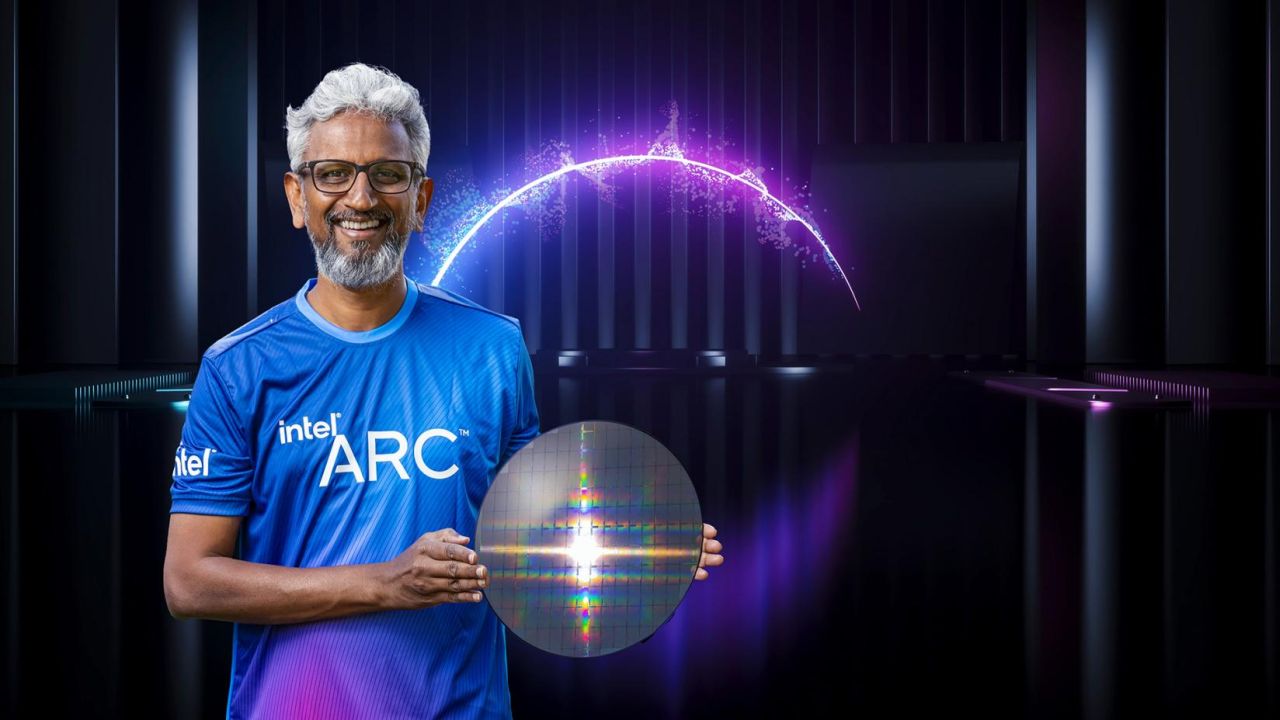XeSS, Intel’s upscaling technology, returns to show itself in video: it will offer five qualitative modes
In a few days Intel will unveil its first dedicated GPUs for laptops, but the attention of gamers is all about the desktop offering that will debut during the second quarter.
Broadly anticipating the features of the Xe HPG architecture in the summer of last year, the company announces the arrival of XeSS (Xe Super Sampling)an upscaling technology that recalls NVIDIA’s DLSS in its operation and which will also challenge AMD’s FidelityFX Super Resolution, which is about to arrive at version 2.0.
In the past few hours, in some sessions of the GDC 2022, Intel returned to talk about XeSS revealing more information. First of all the company has confirmed plans to make XeSS a technology not tied to its Arc GPUs: Competitive video cards will also be able to use XeSS via DP4a instructions, as long as they support Shader Model 6.4+.
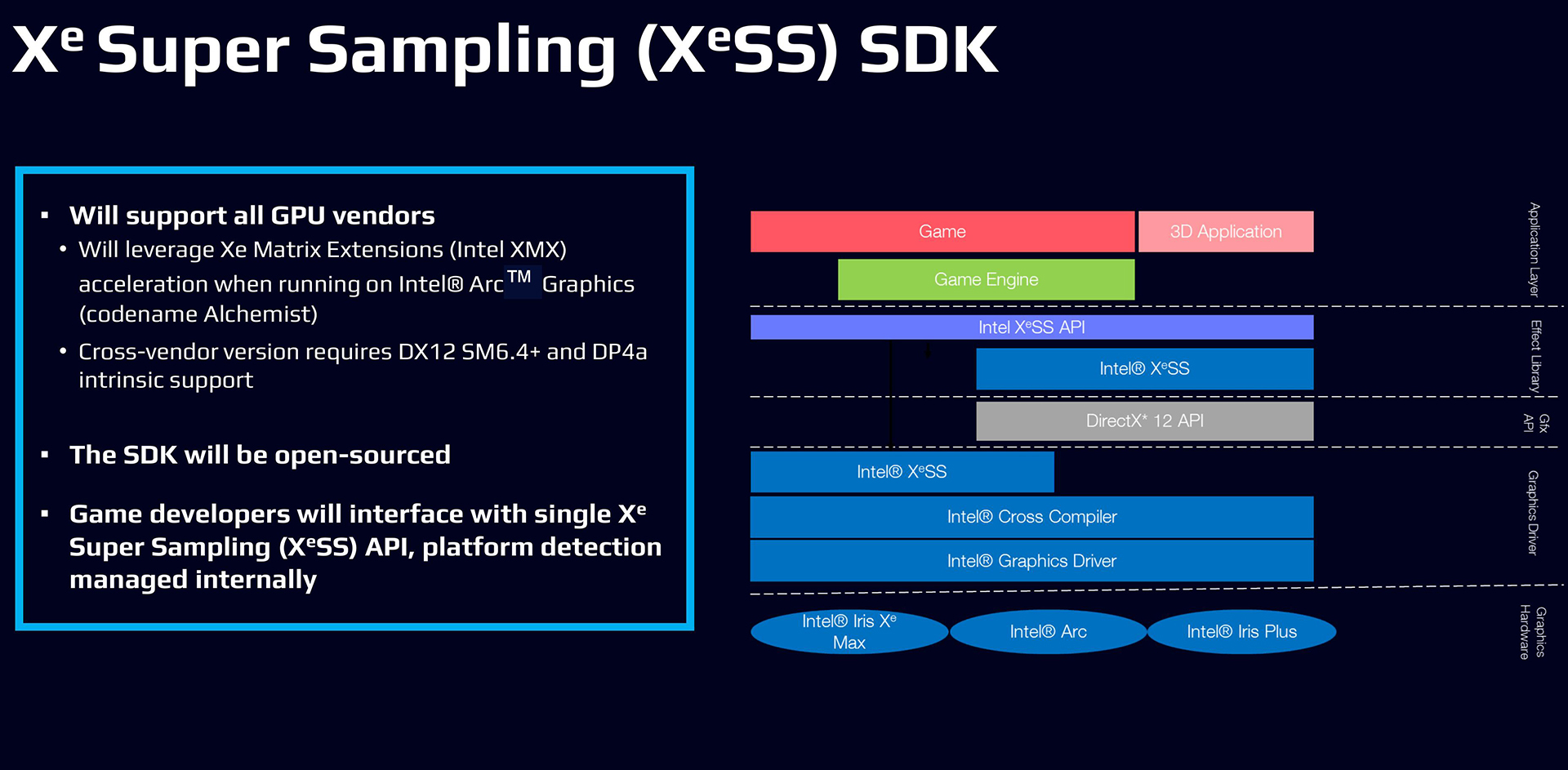
On Intel GPUs the technology should run at its best taking advantage of the acceleration of the Xe Matrix Extensions units (XMX), an aspect that unites XeSS to NVIDIA’s DLSS that relies on the Tensor cores found in GeForce RTX GPUs. The positive aspect that, in any case, developers will interface with a single API able to independently manage all the operation depending on the hardware available, so the implementation should not be extremely complex.
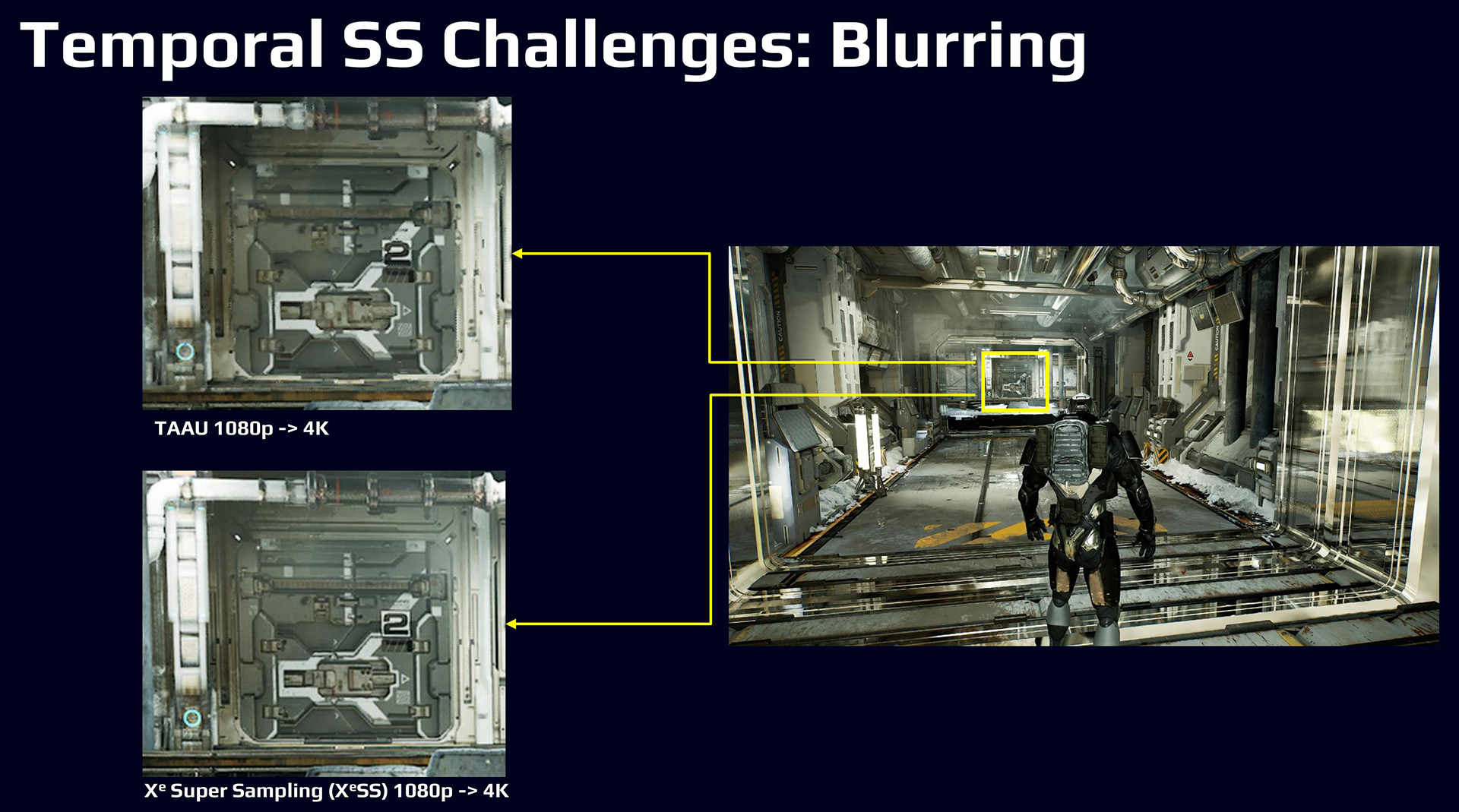
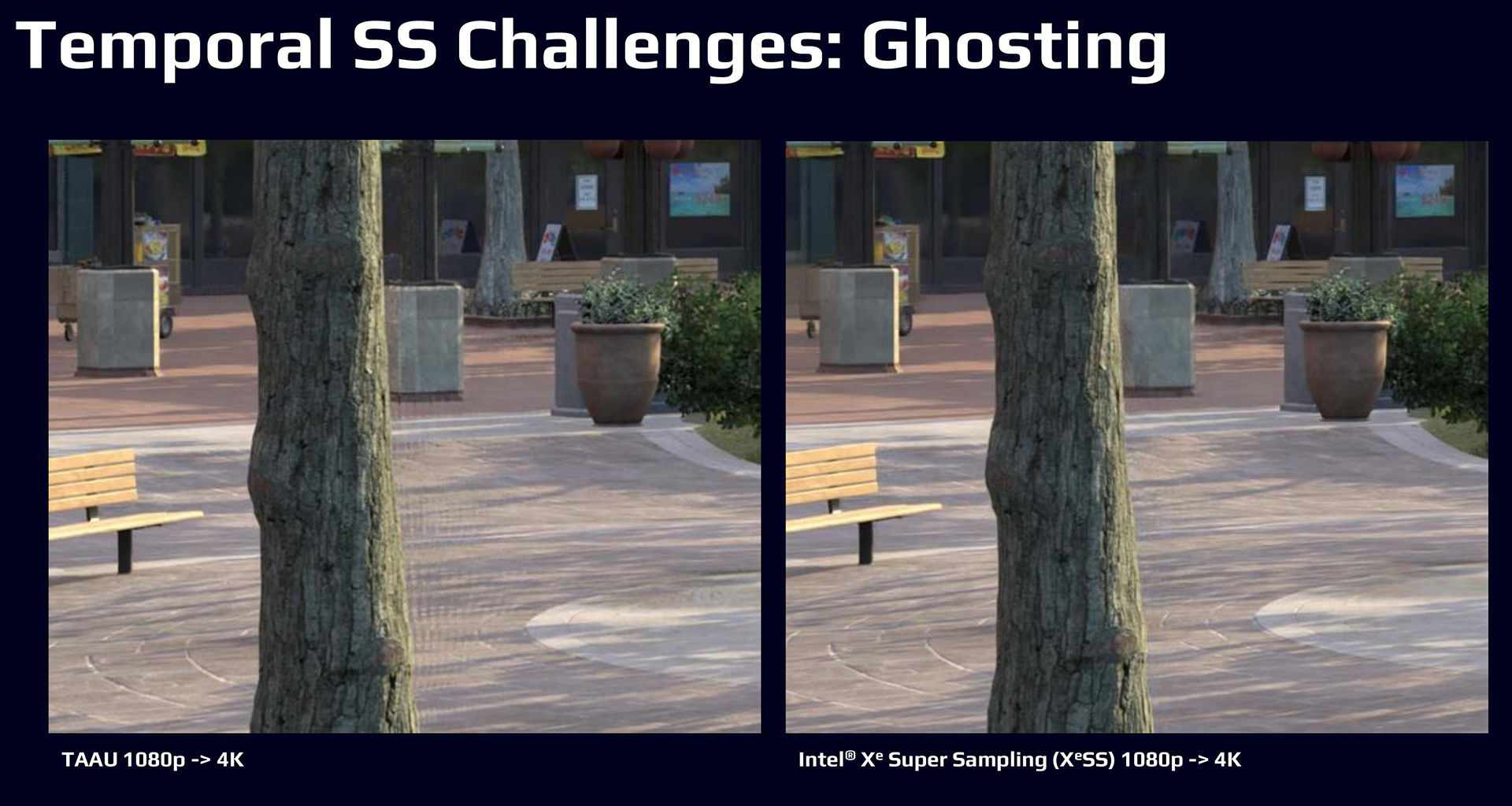
Compatibility aside, Intel engineers are working for leave behind or at least limit the most common problems of time upscalerssuch as ghosting, shimmering and blurring, with particular algorithms that, based on some comparisons shown at the GDC, would seem to yield good results.
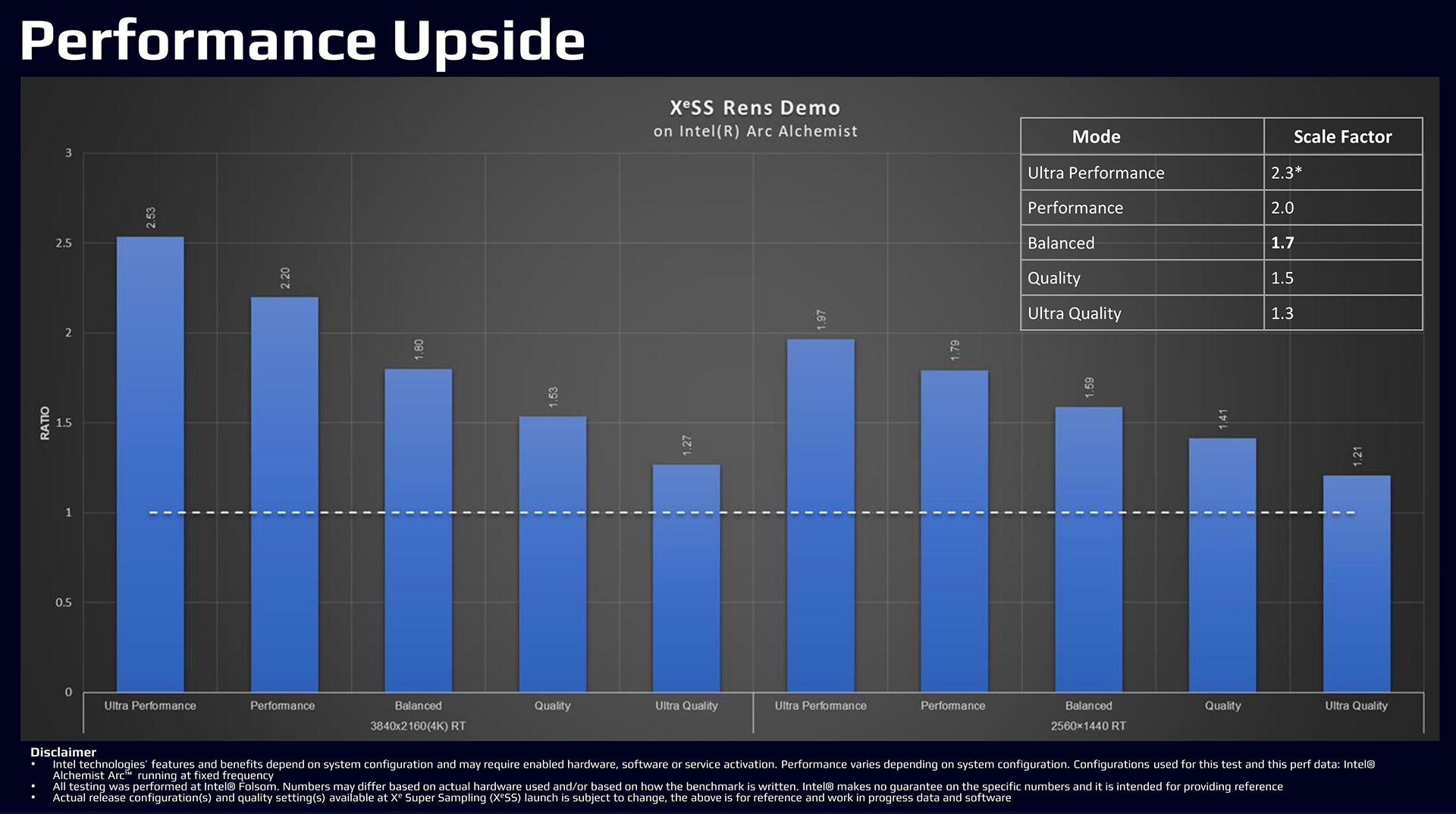
Unlike DLSS 2.x and FSR 2.0, XeSS makes available to gamers five quality modes, including Ultra Quality with a 1.3X scaling factor. According to Intel, that mode improves performance by 21 – 27% in 1440p and 4K over the native resolution, while Ultra Performance mode achieves a 97% and 153% higher frame rate, respectively. The data is based on an internal demo called Rens and collected using an Arc Alchemist GPU set at a fixed frequency.
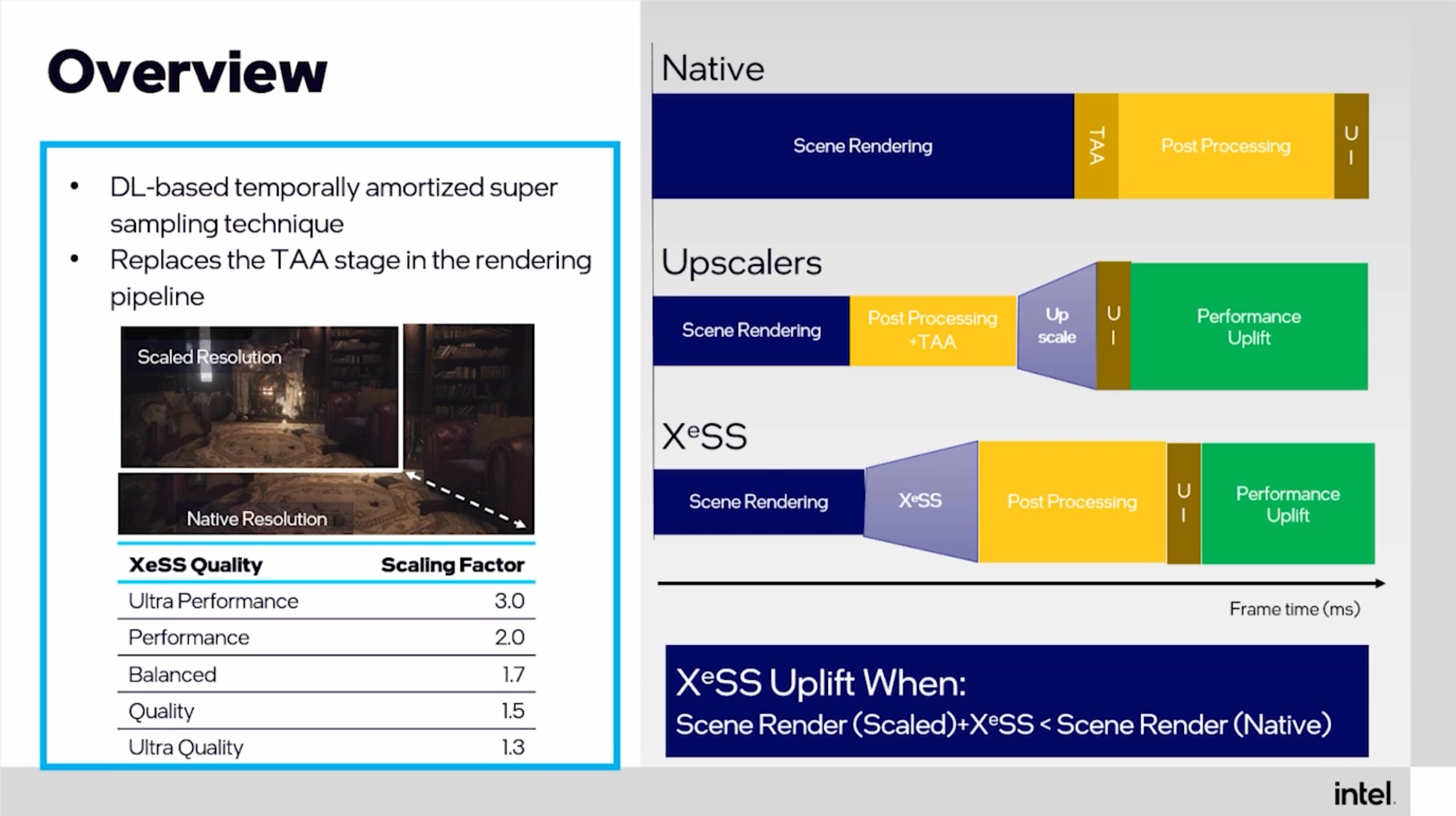
At the moment it is not clear when XeSS will debut, but perhaps as early as March 30 when the company will present Arc A370M for the mobile world: on the same day, Death Stranding Director’s Cut arrives on PC, for which the integration of the technology has already been announced. Simple coincidence? We’ll see. Kojima Productions is not the only one ready to implement XeSS, agreements have also been signed with 505 Games, Codemasters, EXOR Studios, Fishlabs, Hashbane, IOI, Illfonic, Massive Work Studio, PUBG Studios, Techland, Ubisoft and Wonder People.
Below, in these two videos, you can see the technology in action, explained by Intel engineers:





